
Our van driver steered into ferocious battering winds, clutching the wheel to stay centered in the lane. Icy sheets of rain slashed at the windows, and we stared through driving sleet at miles of lava rock, stretching away into the distance. The storm transformed black barren fields into blurry nightmare hellscapes, and I wondered: How do people survive in such a land? And this is their summer?
When one of us inquired about the bad weather, Elias our driver/guide shrugged and smiled. “This is pretty good, actually.”
While prepping for this trip I read repeated warnings about the vagaries of Icelandic weather. Be prepared for anything, especially at the tail end of Iceland’s summer season, just before the veil of darkness and frozen ice descends. We were lucky: During the first few days of our trip we walked in sunshine, brisk winds, a few rain sprinkles. Occasionally the wind assaulted our faces, cold and cruel, a hint of its chilling potential.

That cold cruel wind may be why I saw so many pairs of sturdy waterproof hiking shoes, in candy-fun fashion colors, on the feet of Reykjavikians. And those lovely woolen sweaters. And high-tech storm parkas, gloves, and hats. Icelanders are prepared, at any moment, for the maelstrom to descend.
Colorful shoes, pastel painted houses, and building-sized murals also cheer up Reykjavik’s dark winters, when from November to February the sun never rises and darkness covers the sky 24/7.
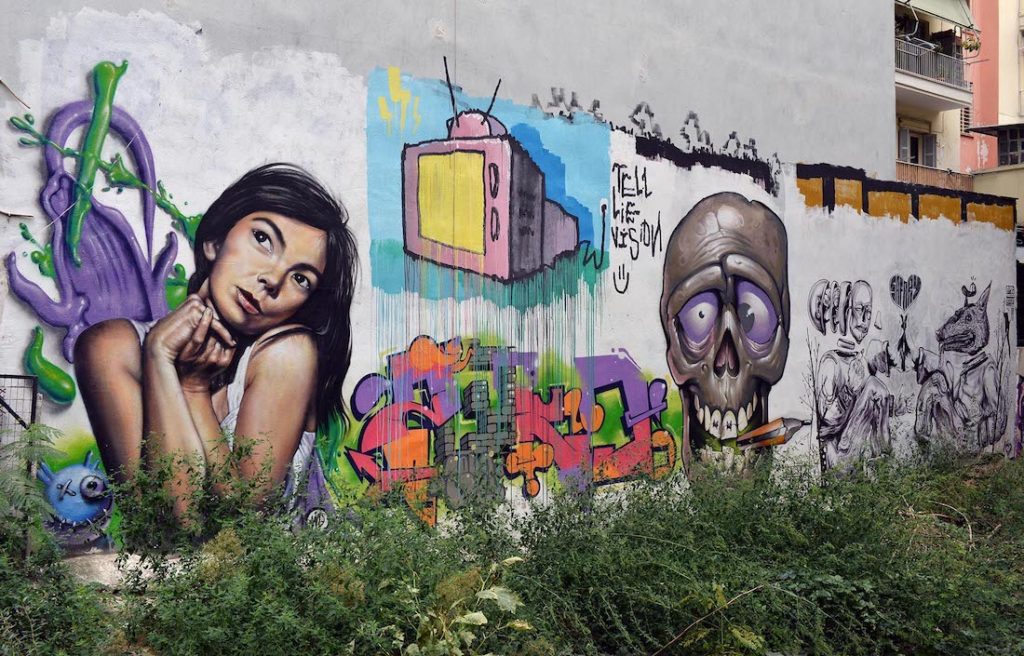
So if you plan to visit any time of year, bring the proper (colorful!) gear. Thin sheets of plastic, by the way, won’t do. When we stepped into the storm at Gulfoss Falls, we watched as a tourist struggled to unfurl one of those plastic rain parkas we use at Seattle sports events. Uh, no. By the time she wrangled it over her clothing, she looked soaked and shivery cold.
That said, one of our favorite stops on our Golden Circle Tour was right there at Gulfoss Waterfalls, during the fierce maelstrom I just described. We peered over the cliff edge as our feet almost lifted off the pavement due to the forceful winds. Wind gusts drove cold rain and freezing mist straight into our faces, and the roar of rushing waters thundered over the falls and vibrated through our bodies. It was absolutely thrilling. Especially since it did not destroy us.

Sometimes I think of the power of nature as a nebulous thing, a force we keep at a distance with our sturdy house walls and weather apps. Here in Iceland, the Power of Nature threatened to blow us over the edge, into the frozen frothing waters at the base of the waterfalls. I’m sure some tourists have been swept off edges, based on the stories Elias told us about stupid tourist mishaps. Some visitors hiked to the base of the river canyon while we watched, in fact, and perched on slippery rocks by the falls while the winds roared. Yikes.

We were not death-wish tourists of course (old, knees, smart). So no hikes down to the canyon’s base for us, not while Nature exploded in fury. And by the way, the wind was blowing us away from the edge, rather than toward it, which helped us keep a proper distance from the abyss.

SAVAGE LANDSCAPES AND LITERARY RICHES
Iceland’s geographical extremes may be why Icelanders revere storytelling, writing, and book reading, and possess such prolific imaginations: One in ten Icelanders has published at least one book. When I think of the Sagas and other stories I’ve read since visiting here, the common denominator in all of them? Iceland’s challenging natural environment, the struggle for survival against all odds. The drownings, the freezings, the boilings, the beheadings.
Ok, maybe not the beheadings – thank a legalistic bureaucrat for that. Early 1800’s Iceland had those scoundrels, too, just as we do today. One of those guys had it in for Agnes the beheaded, the protagonist in the novel Burial Rites. She was the last person executed in Iceland, in 1832, and the harsh rural environment in which she struggled to survive played its part in her gruesome demise. That environment also inspires tides of Icelandic literary tales: murders and mayhem, ghost tales, survival sagas.
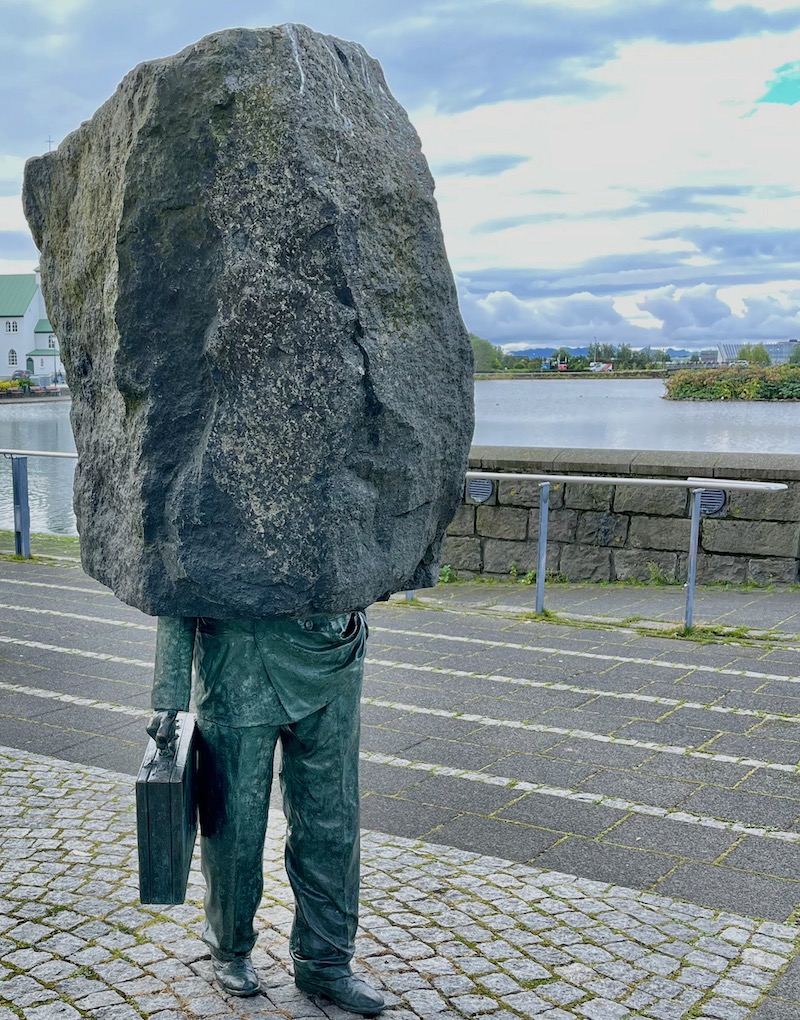

Iceland’s literary landscape overflows with riches, a wealth that seems to grow right up out of the twisted rocks and deep crevices of this dramatic land. One of our favorite Icelandic reads, Woman at 1,000 Degrees, isn’t so much about Iceland’s savage landscapes, but it is, in another way. Herra tells her life story from a Reykjavik garage loft, where she lives with just her laptop and an old grenade clutched in her hand. Not much weather/landscape drama here.
However: Iceland’s rugged survivalist bent illuminates Herra’s life story. She continues to exist against all odds, which seems to be an Icelandic thing. She lives life on her own terms, an Icelandic attitude we heard expressed repeatedly. Icelanders are tough. In Iceland’s natural world, you’d have to be, or you just wouldn’t make it.
Humans who live in such daunting environments tend to grow up to be philosophers, readers, and book writers. Maybe that’s because when we live in such forbidding landscapes we seek explanations, and hope. Why is the natural world assaulting us, threatening our existence? How will we survive despite the odds?
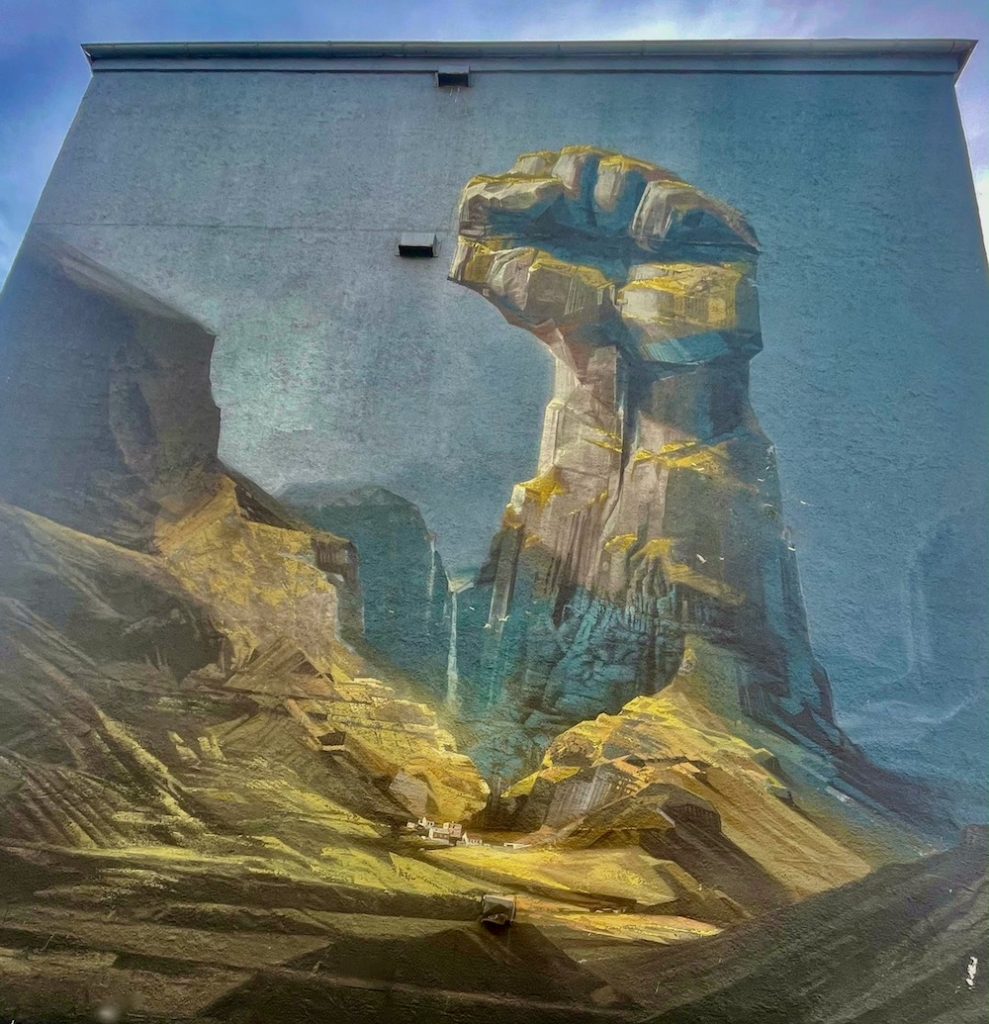
Think how often one might ask such existential questions when repeatedly faced with volcanoes, earthquakes, blizzards, and deadly ice storms, as residents of Iceland still are today (although now they have cozy geothermal heating…much better). When humans live out their daily lives among startling twisted lava shapes, wind shorn black basalt beaches, and seething steaming geyser eruptions, they might need to tell a story or two to keep mental demons at bay.
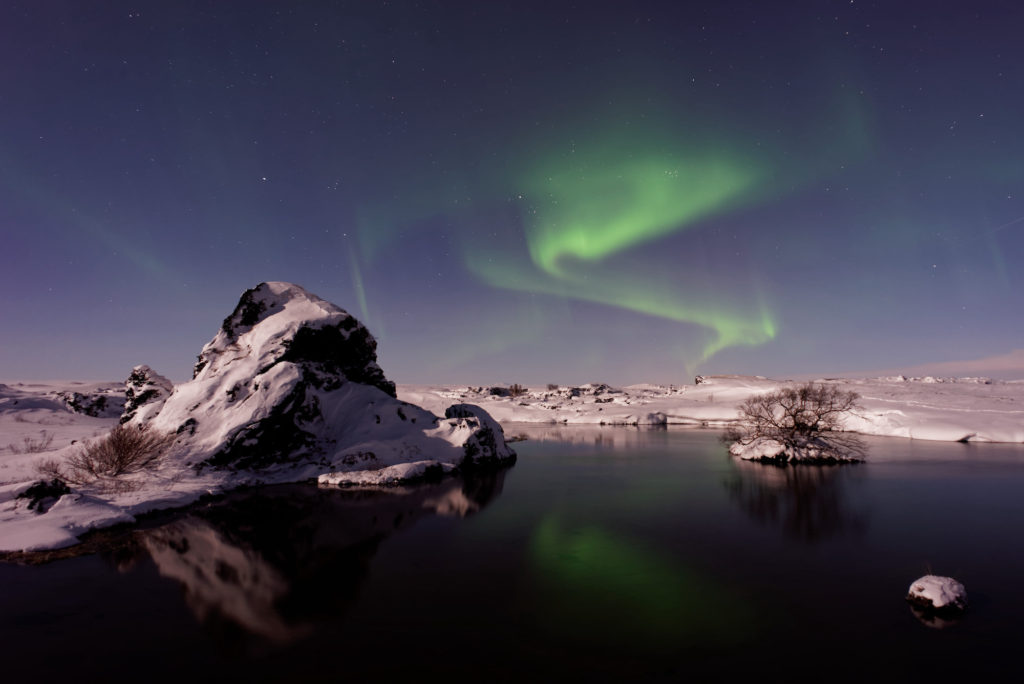
Or they might tell stories, just because. Humans seems hard-wired for gossip, studies show. Or maybe it’s because during those long months of winter, ancient Icelanders huddled beside crackling fires with nothing more than their imaginations for entertainment. And when a writer needs something dramatic to punch up the plot, just look outside. (Or toss in a hand grenade. That works as well.)
REYKJAVIK HISTORY, CULTURE, AND ARCHITECTURE LESSONS

So on to more stories. The day before the Golden Circle maelstrom, we walked with high school history teacher Sara, our CityWalks VIP guide, from Reykjavik’s iconic Halligrimskirkja Church down to the Seaport, where she left us standing on the Hub of Reykjavik pavement marker. She had me at ‘high school history teacher’ and also wore the perfect Icelandic sweater over a Nirvana t-shirt, and cool tennies. She more than delivered, in terms of the tour guiding part. I’d sign up for her class any day.

We began the tour at Leif Erikson’s feet in front of Hallgrimskirkja Church, with its distinctive spire and design, one of the tallest structures in Iceland. Turns out the original design called for a shorter building, but Lutheran church leaders wanted their spire to be the tallest in town. Hey church leaders, remember those verses about vanity, vanity? Or the ones about pride? Oh well, never mind all that. Just make it taller. And so they did.
In 1930, Sara explained, the United States gifted the Leif statue to commemorate 930 CE, when the 25,000 strong Icelandic population established the World’s very first parliament, the Althing. The United States also provided other funds to help build the stunning church. Yay Yanks.
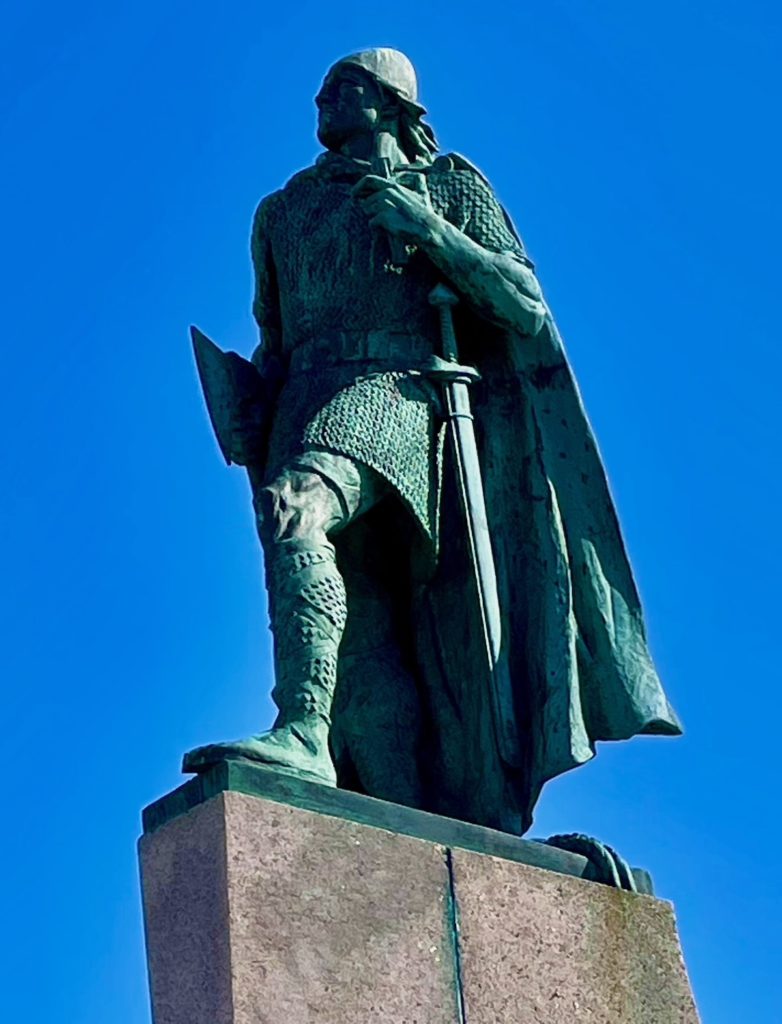
Americans know the name Leif Erikson, of course. In Seattle we have our own Leif statues, in fact, since our fair city was a popular destination for Scandinavian immigrants, my ancestors included (the blondes). I learned more about Leif in the Saga of Erik the Red, Leif’s father, one in a collection of 40 family narratives about Iceland in the 9th to 11th centuries. Icelanders study the Sagas in much the same way U.S. schoolchildren study the Constitution and the Federalist papers, but the Sagas are way more fun. Family conflict, drama, brothers and sisters at war. Hackings. That sort of thing.
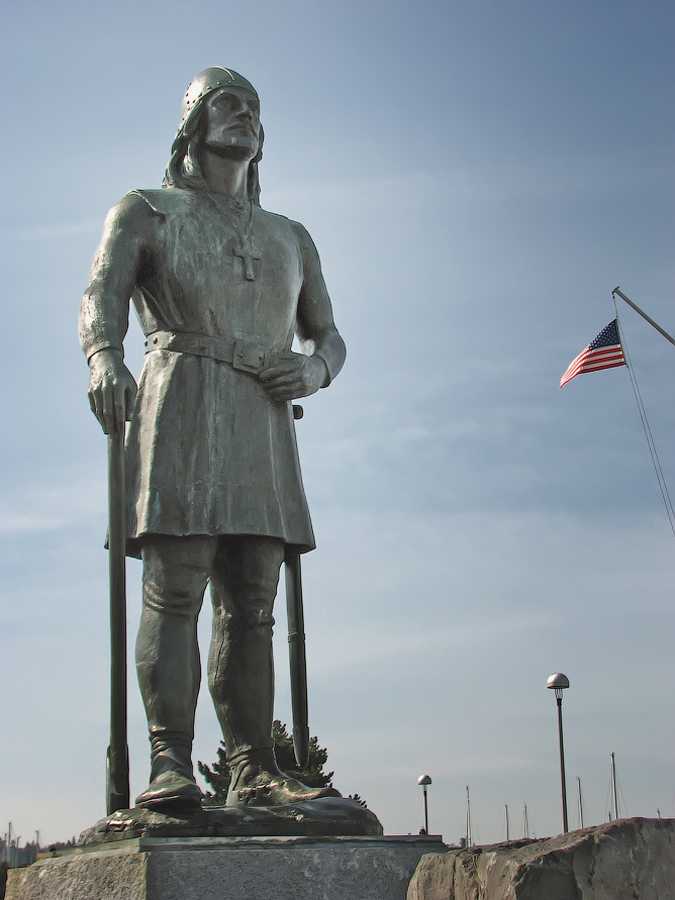
In Erik the Red’s tale, we learn that Leif sailed to Norway around 1000 CE, and probably sailed off course on his way back to Greenland, landing instead on the North American continent, no one knows exactly where, in a region he called Vinland. Might have been Newfoundland, maybe it was Maryland? All we know for sort of sure is that Leif made it to North America. Somewhere.

Americans, take note: That’s almost 500 years before Mr. Columbus sailed the ocean blue, in 1492. Turns out I can still recite that rhyme thanks to President Benjamin Harrison, who placated Italian-Americans after deadly, 1890s anti-Italian riots by honoring Columbus with a celebration. Sure, Columbus exploited and enslaved indigenous populations, but he was a brilliant mariner, and Italian. Good enough, back then. Not any more, of course, as anti-Columbus movements grow in influence each year.
So in the States, Columbus Day is October 10th, 2022, and Leif Erickson Day is October 9th. Which day do you think this descendent of Scandinavian immigrants is going to celebrate? Turns out neither one, since we should all be celebrating Indigenous People’s Day (different days, depending on location), since those guys and gals were here first. No ‘discovering’ needed. Ok then.
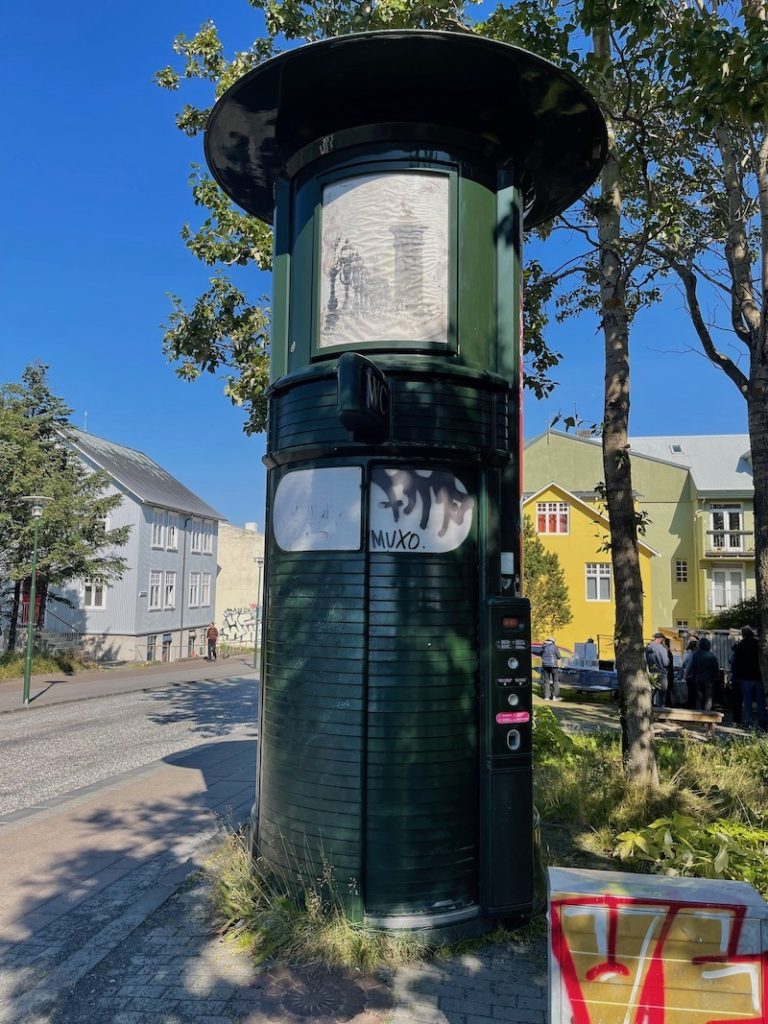
Back on the streets of Reykjavik, Sara explained what the round green space capsule buildings we saw around the downtown area were: public bathrooms, with revolving doors that twirl open at a touch. They’re scattered throughout downtown Reykjavik, so don’t despair when the need strikes. Just look for the green space capsules with twirling doors.
All four of us appreciated Sara’s thorough explanations of Iceland’s educational, social, and cultural mores. We learned how education through university level is free; women have full reproductive rights; health care is free; guns are (mostly) illegal, except for hunters and hobbyists, who wait two years for a license, renew yearly, and must pass background checks that include psychological screening. Iceland also has the lowest crime rate in the world, per capita.
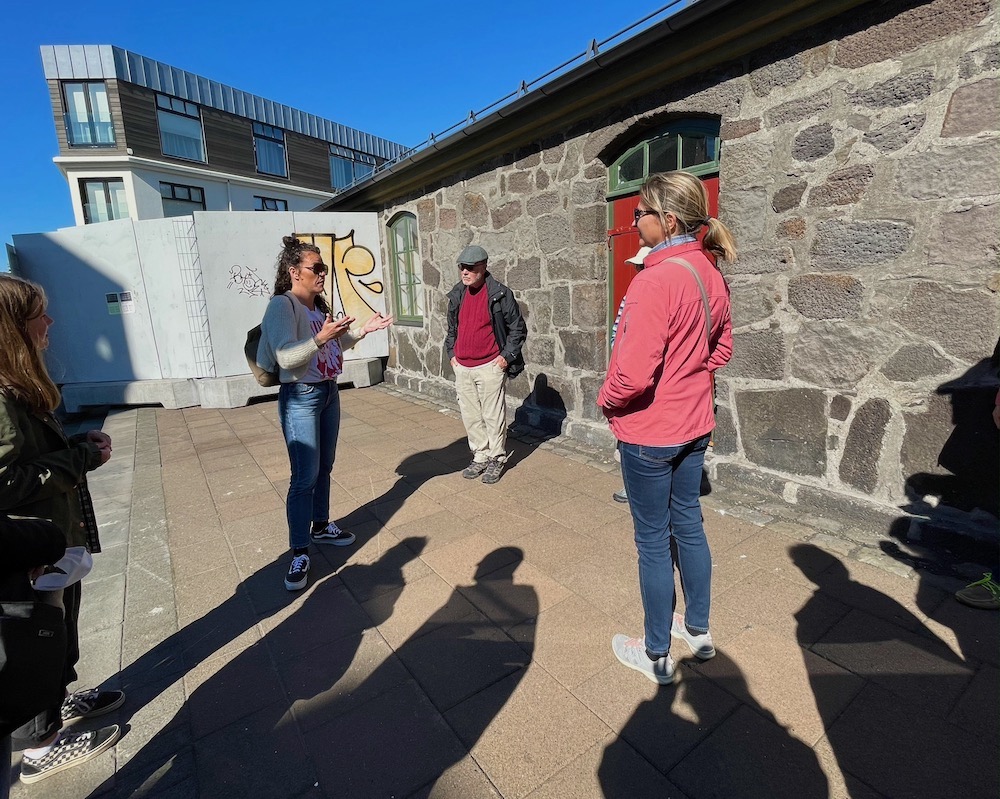
Quite the contrast with home, we all noted. Iceland has other issues, of course – the 2009 financial collapse, check, as well as a high tax rate: about 42%, Sara told us. And its population is tiny: approximately 370,000 citizens, and 2/3 of them live in the Reykjavik area.
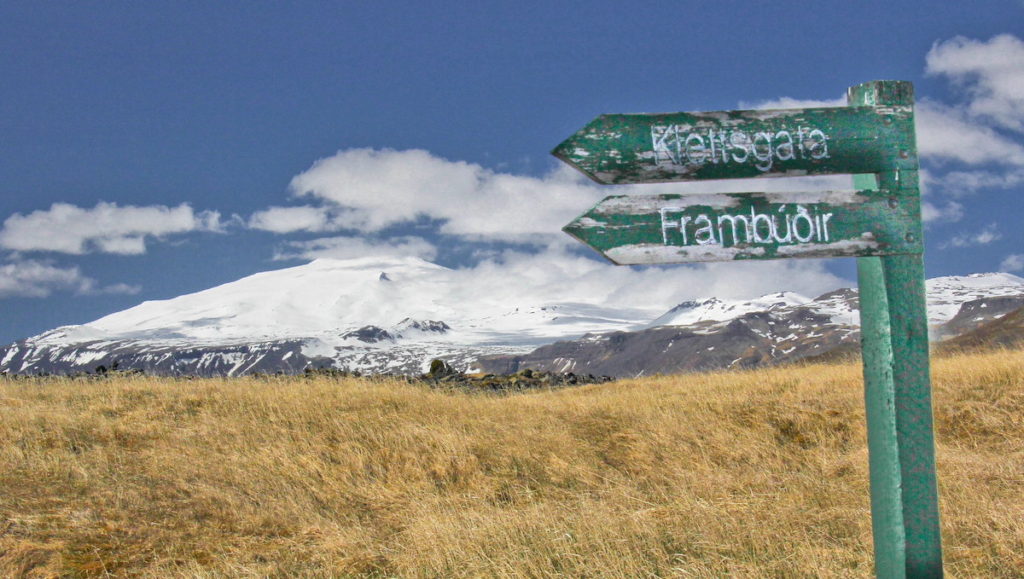
So very different than back home, and yet. Gives one the urge to discuss politics, which we never do anymore when travelling, or anywhere, because, well, you know. Quite intriguing, though, to see a country successfully implement some of the policies we argue about back in the States. Might be worth a look, everyone, just maybe.
So moving on. Since we had such gorgeous blue skies for our walking tour, it would just be wrong not to share these photos of some of Reyjkavik’s beautiful buildings and murals:
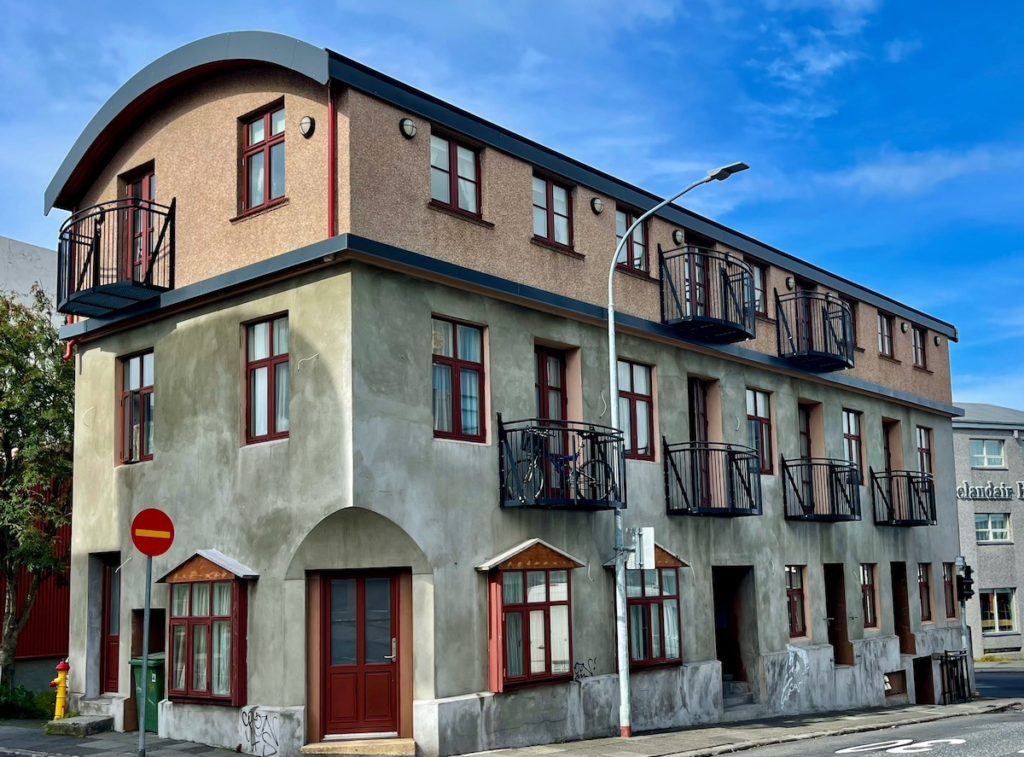
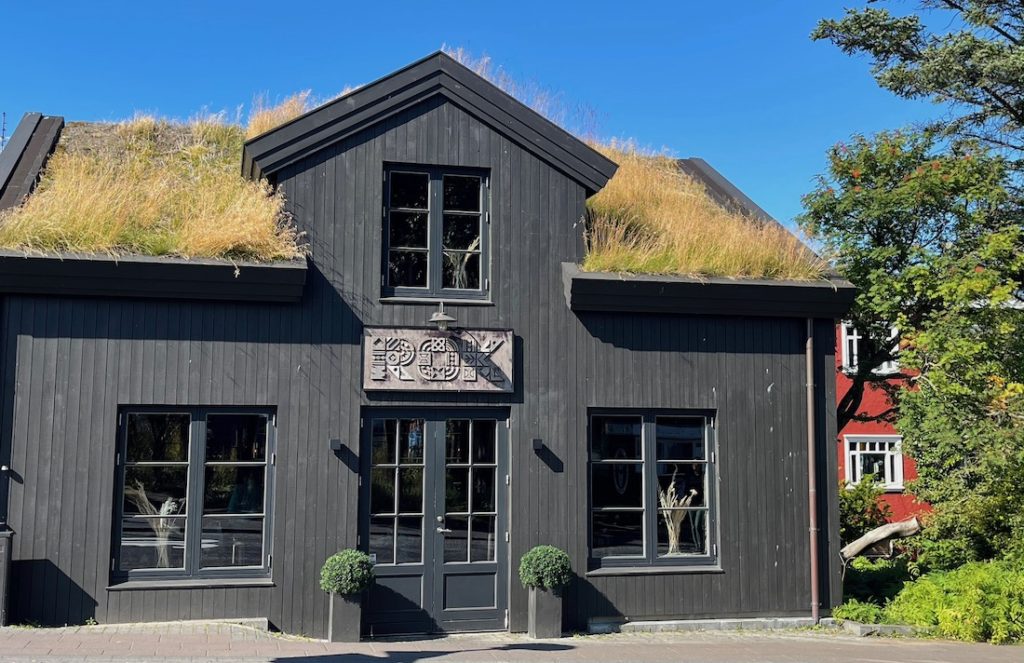
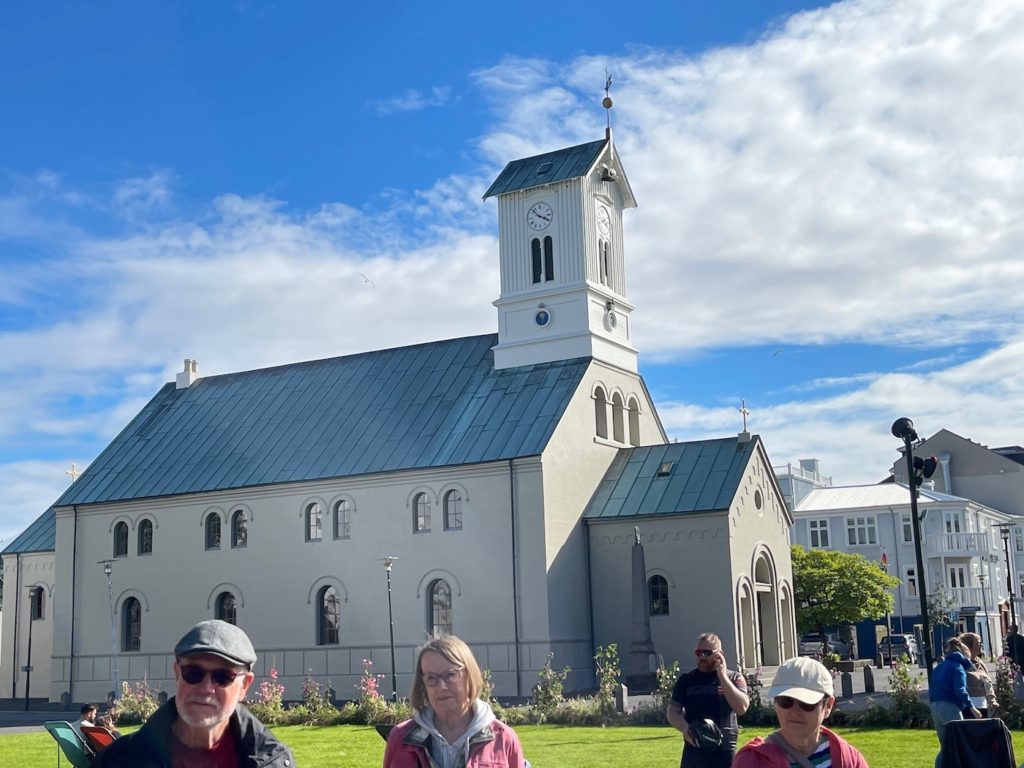
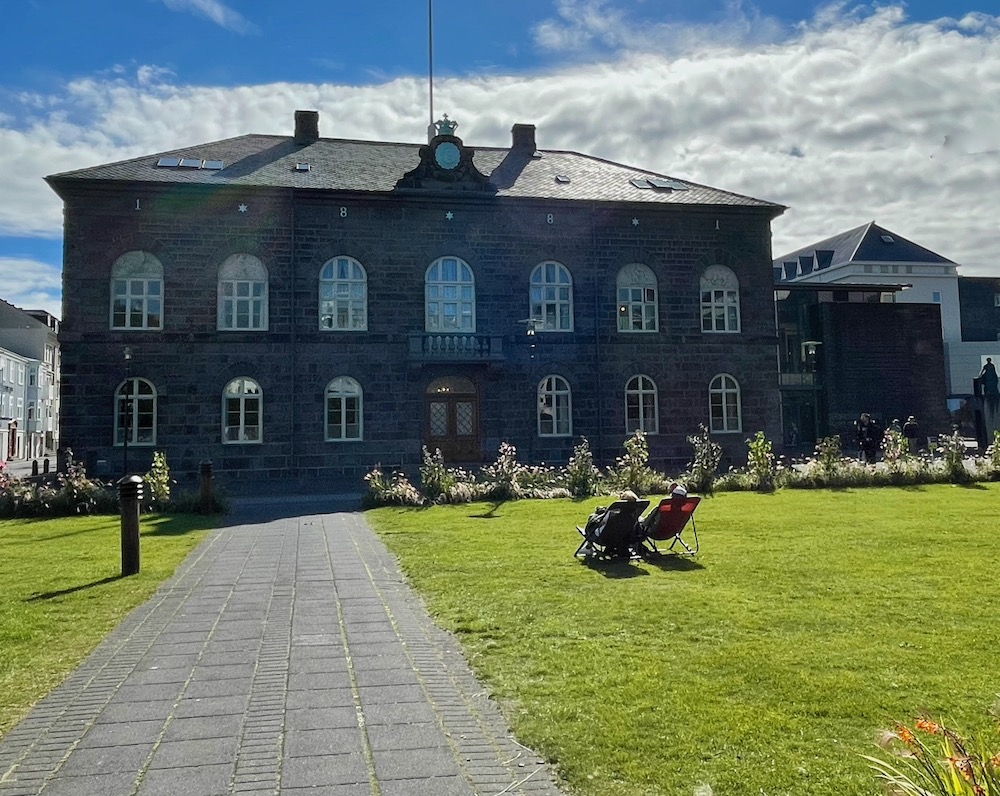

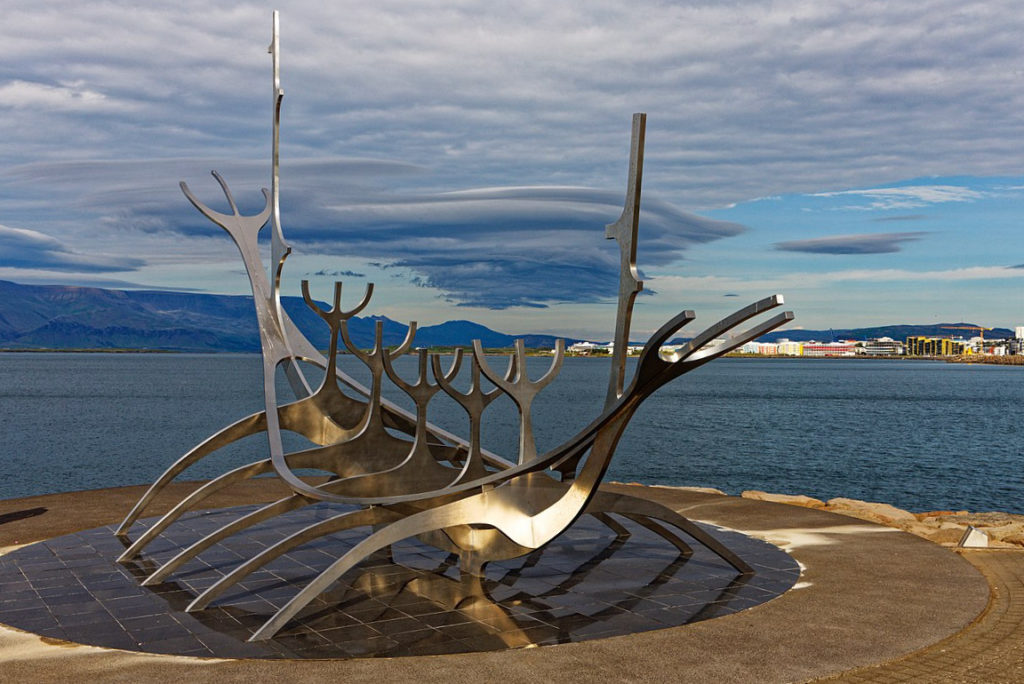
BOOKS, BOOKS, AND MORE BOOKS
Sara taught us all about Icelander’s passionate love of books, and deposited us at a branch of Reykjavik’s venerable bookstore chain, Penninn Eymundsson Skólavörðustíg, in operation since 1872. She told us about Iceland’s Jólabókaflóðið, or Christmas Book Flood, when Icelanders spend inordinate amounts of time choosing the perfect book gift, then curl up on Christmas Eve in front of the hearth with…. books. We had our own personal book flood back at the Airbnb, as we juggled all those new book titles we just had to buy. (FYI there’s a list, with annotations, at the end of this post.)
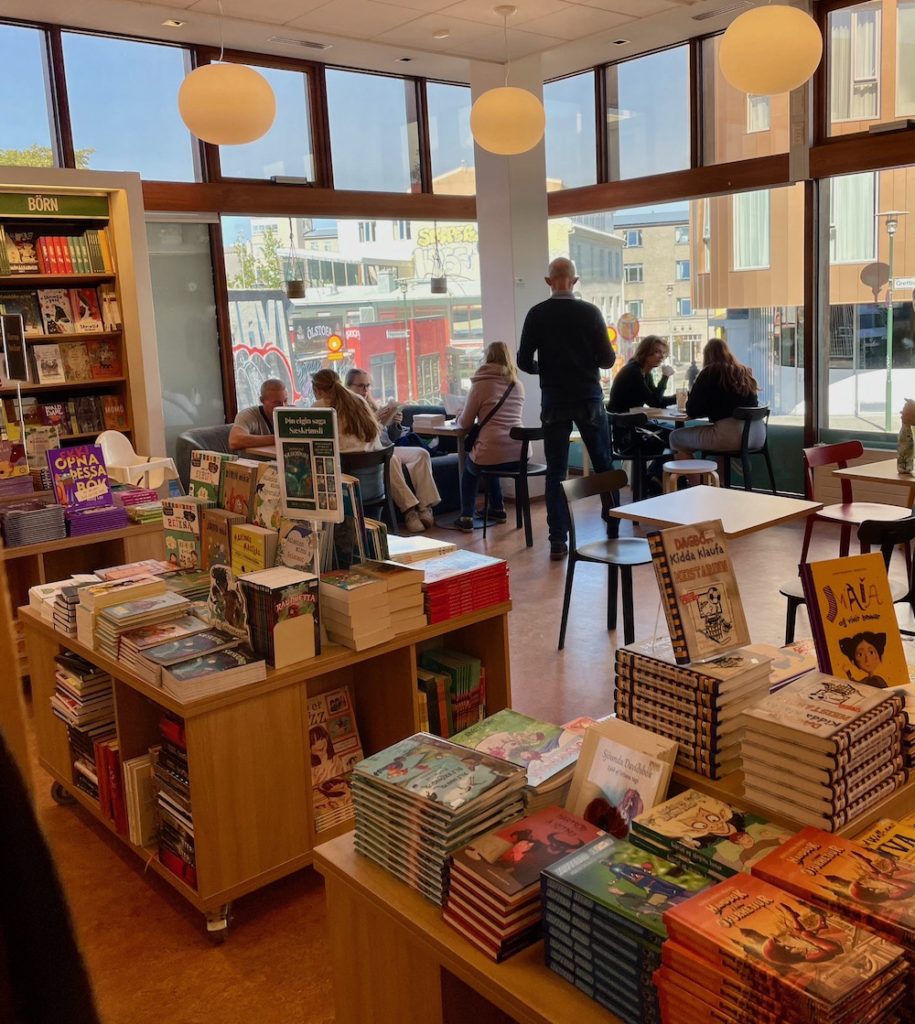
The rest of my personal ‘book flood’ waits to be downloaded or purchased later – so many Icelandic authors I want to read now. I identified with what Kent wrote in Burial Rites:
Bli¢ndur er bo¢klaus madur:
Blind is a man without a book.
Women as well, of course. No blindness headed our way any time soon.
For more on Icelandic literary gems to read before a visit to Reykjavik, check out this excellent overview by Reykjavikian author Olaf Olafsson, with curated book choices designed to enhance any Reykjavik walking tour.
THE SUN SHINES ON THE GOLD CIRCLE
Our stormy Golden Circle tour, the day after our Rekjavik history walk, turned sunny once the maelstrom quieted down and the clouds parted. We saw steaming mud pits and spurting geysers at the Geysir Hot Springs; we patted the noses of Icelandic horses, we checked out an indoor hydroponic vegetable farm; we walked around a volcanic crater; shopped for hand-knitted woolens; and finished up with a soak in the famous Blue Lagoon’s soothing steaming waters.
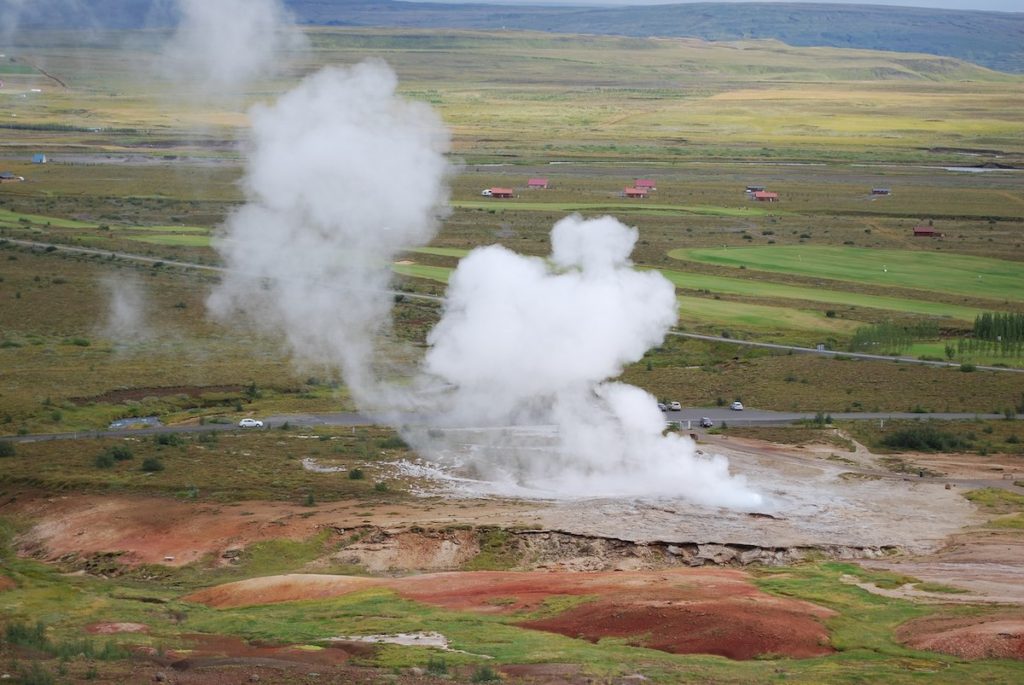
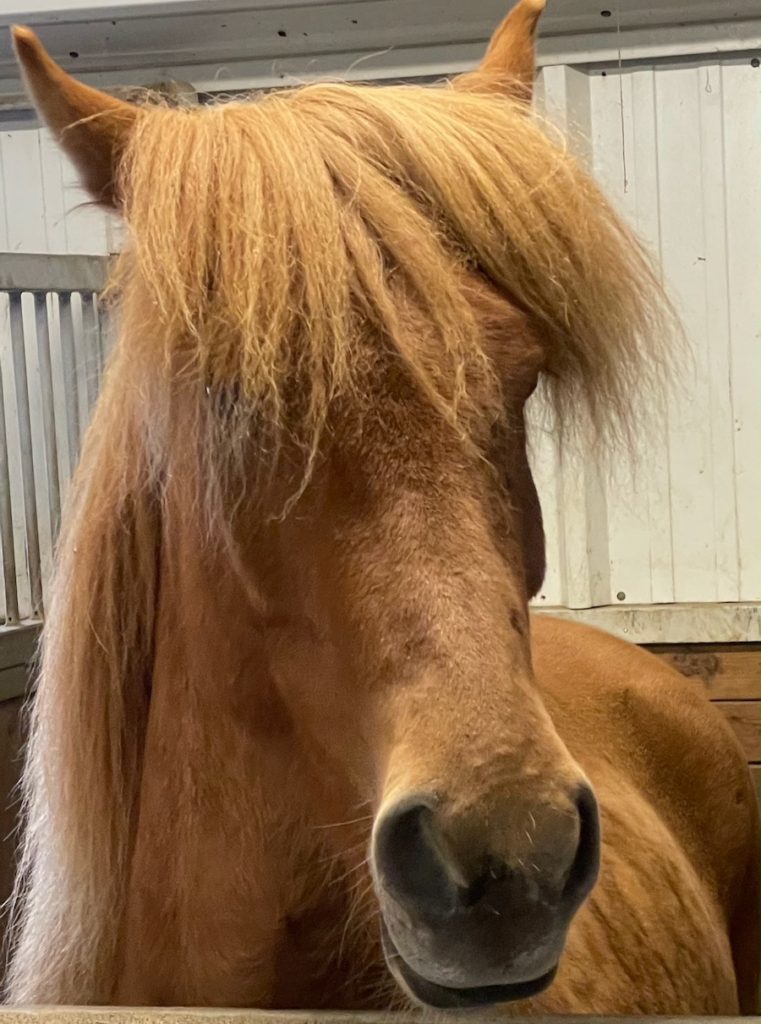
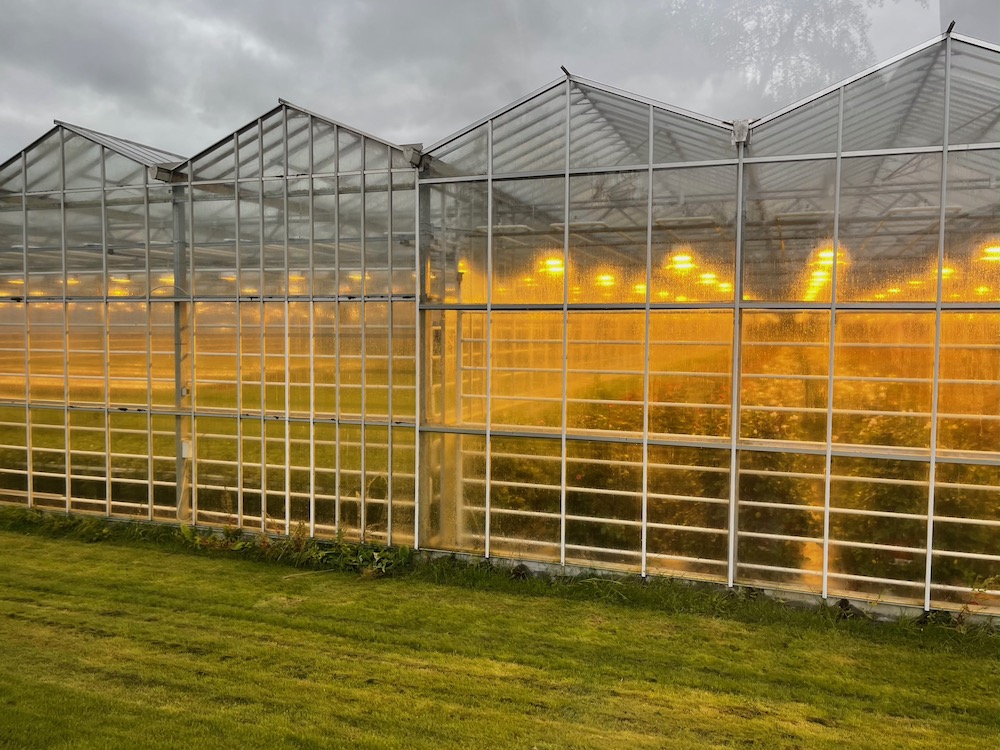
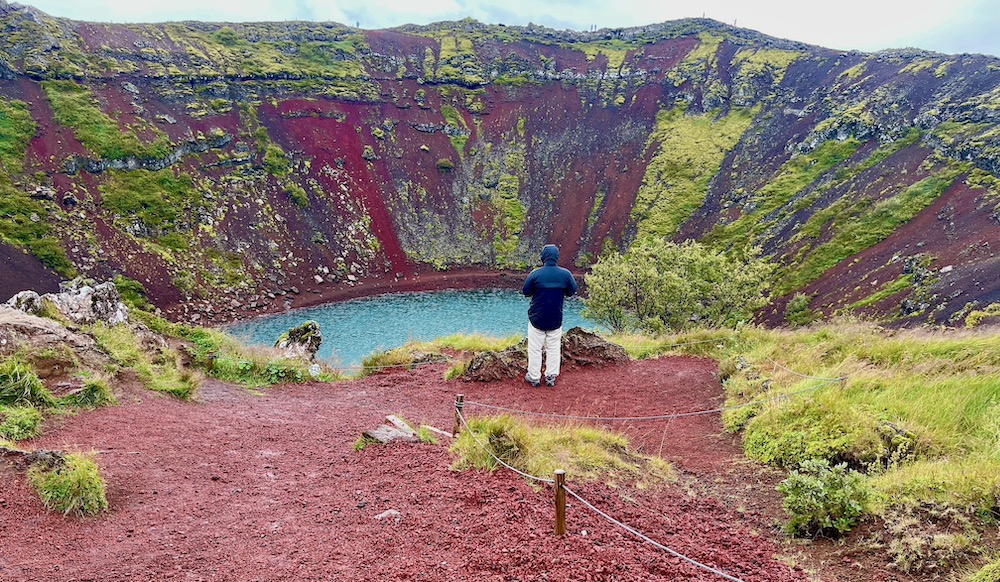
THE BLUE LAGOON: NOT FOR EVERYONE
While you can soak for free in Iceland’s ubiquitous local pools if you’re old like we are, you’ll pay big bucks for a Blue Lagoon swim, the quintessential Iceland experience one sees in all the travel brochures (we paid $85 each for our two-hour soak). I loved it despite the price, although my travel companions, including Padre, were rather ‘meh’ about the experience. So it’s not for everyone, and it’s not where the locals hang out, either. According to Elias the locals don’t go there since it’s always filled with tourists. Of course. And did I mention pricey?
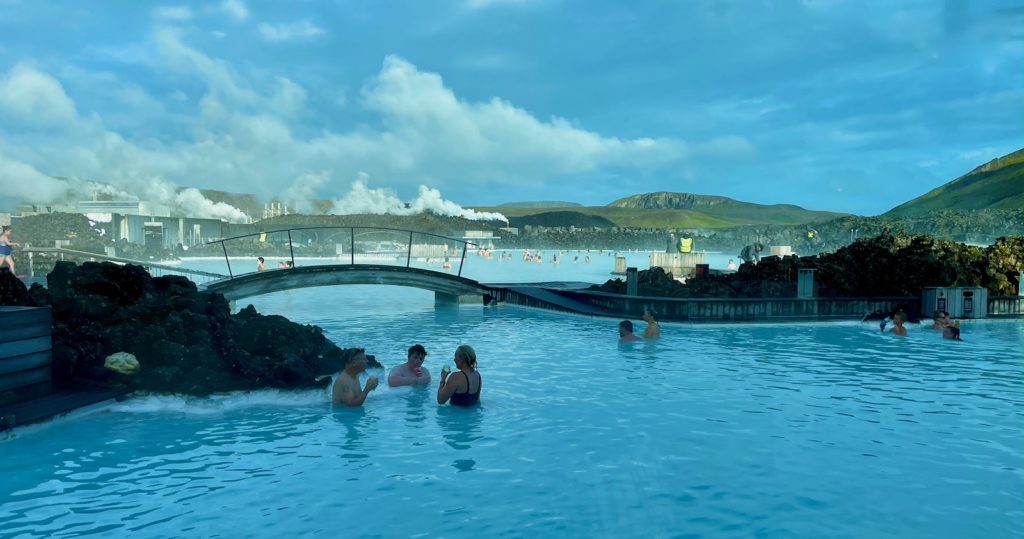
Yet at the Blue Lagoon, I learned that hellscapes have their charms. The steaming pools sit in the middle of old lava fields, volcano peaks loom nearby, and hot bubbling waters rise up from the depths of the earth. Yep. Classic hellscape.
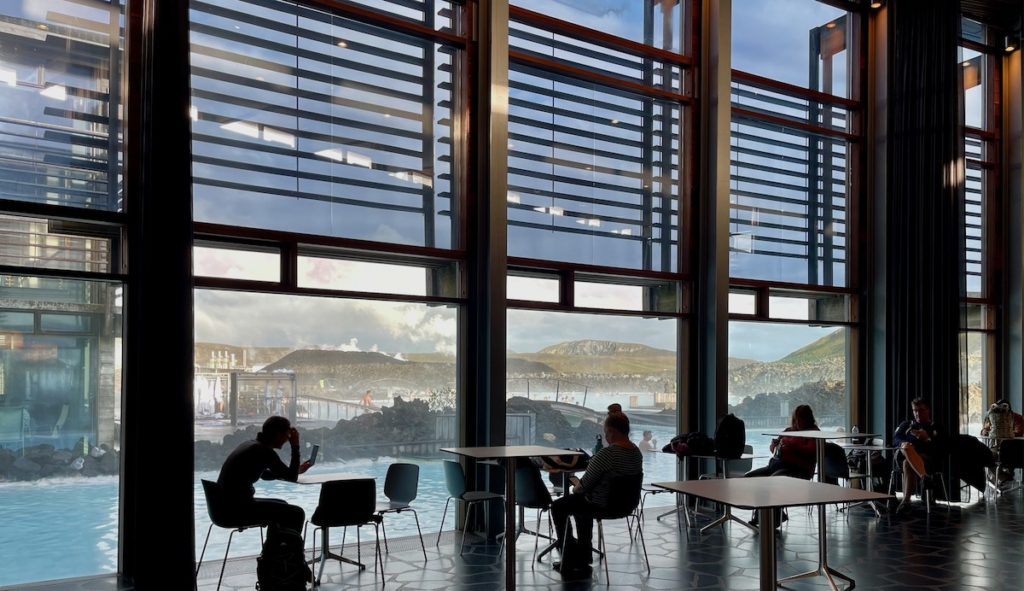
Yet what an enchanting hellscape it is. No wonder people come from all over the world to soak here. Its warm aquamarine waters, the dramatic volcanic views, the mud face masks, the cool drinks, the slow wading and floating in the lagoon’s languid warm waters? Ahhhhh.
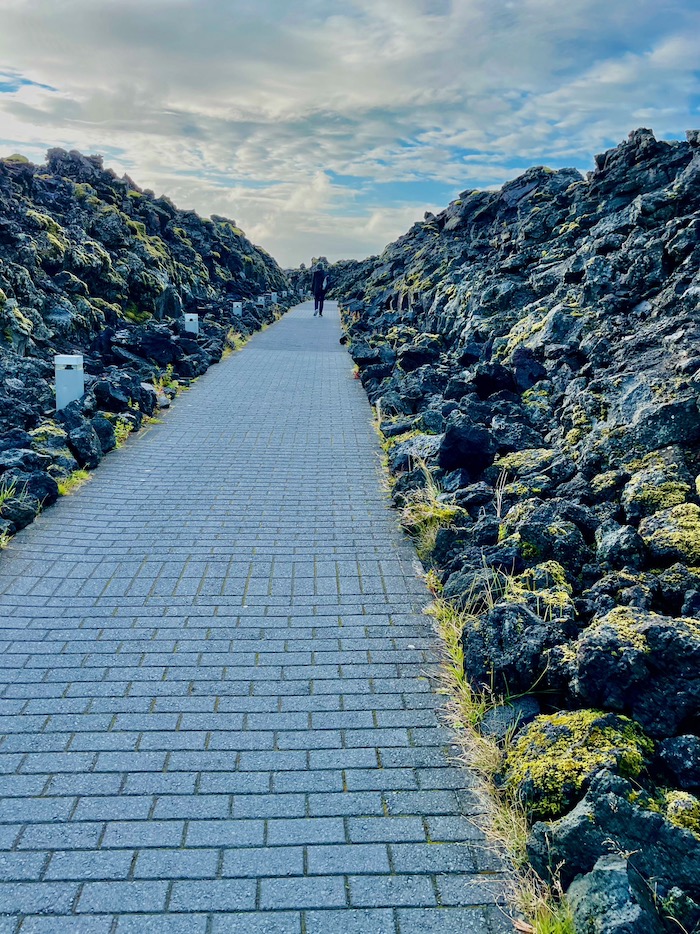
I can’t think of anywhere else in the world that comes close, except Lake Myavtn Baths in Northern Iceland, where we soaked a few days later, and which surpassed the Blue Lagoon in my expert soaking opinion, at half the price. So Iceland rules the world, I do believe, when it comes to dramatic volcanic lagoon soaking.
Yay hellscapes.
As long as they don’t destroy us, right?
Coming up:
Akureyri, Iceland’s second-largest city; Lake Myvatn; elves, trolls, and hidden people; and a gigantic Christmas cat that eats bad children. Now that’s just wrong – but stories like the cat one must have some purpose, right?
Of course they do.
Hope you’ll stay tuned. Thanks, everyone, as always, for following along.
Padre and the Blonde’s Icelandic Book List (So far!)
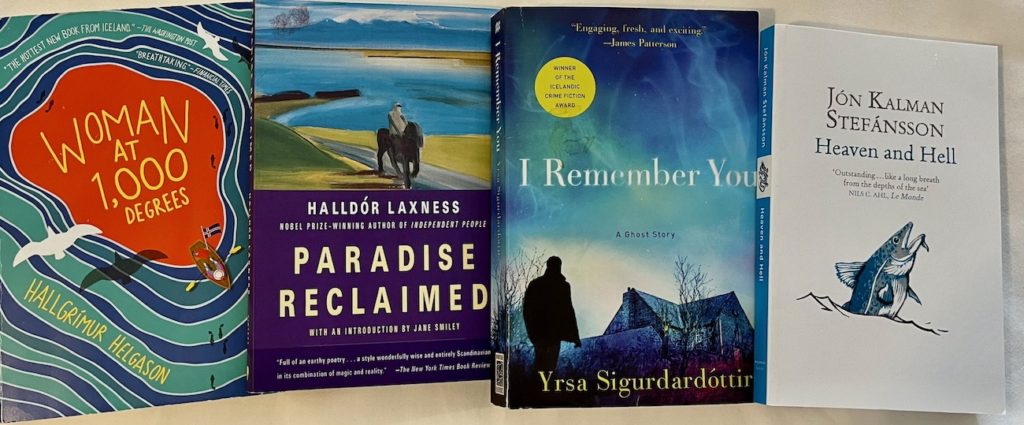
Heaven and Hell, by Jon Kalman Stefansson, which celebrates the redemptive power of friendship, and where Iceland’s harsh weather leads to a tragedy at sea.
I Remember You, by Yrsa Sigurdardottir (and winner of the Icelandic Crime Fiction award), a ghost/murder mystery story in which drownings and storms figure prominently. And there’s a basement ghost. And a septic tank. You’ll have to read it to find out how the basement ghost and septic tank play out in the mystery that drives the story. Very clever.
Woman at 1,000 Degrees, by Hallgrimur Helgason, where fierce, cranky Herra, an old lady holding a WWII hand grenade, plans her cremation (at 1000 degrees, of course) as she relates her own life story, a harrowing tale of World War II, betrayal, and survival.
Paradise Reclaimed, by Halldor Laxness, Iceland’s Nobel Prize-winning author, an author that every Icelandic school child knows and studies. In this novel, the hero searches for his own Paradise by travelling to the promised land of Mormon Utah and back again, a story set in motion by the protagonist’s gift of a pure-white pony to the King of Denmark. Enchantment, disasters, and redemption ensue.
Burial Rites, by Hannah Kent (an Australian author’s book I read before the trip). This book tells the fictionalized story of Iceland’s last executed person, a woman named Agnes convicted of killing her employer and another man, then burning their bodies. Sounds grim, and that it is, yet a page turner due to how humanely Kent brings to life the emotions of not only Agnes, but those who share her journey in the last months of her short life. Its portrayal of rural 1800s Iceland life had me cutting hay with a scythe, and mucking out the barns.
